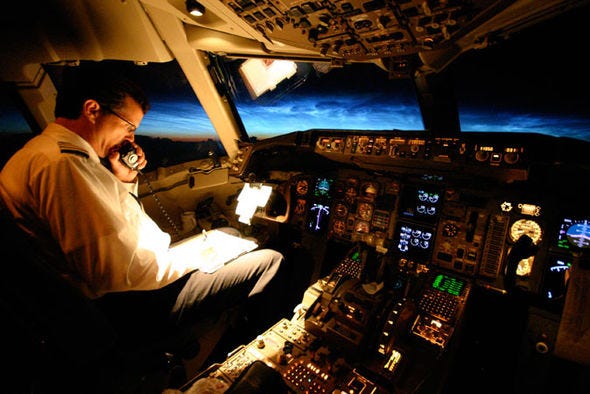There have been several instances where pilot fatigue has been identified as a contributing factor in airline crashes, accidents, and near misses. Here are a few notable examples:
Colgan Air Flight 3407 (2009): On February 12, 2009, Colgan Air Flight 3407 crashed near Buffalo, New York, killing all 49 people on board and one person on the ground. The National Transportation Safety Board (NTSB) investigation revealed that pilot fatigue contributed. The captain had been awake for over 15 hours and had experienced sleep disruptions before the flight, while the first officer had commuted overnight from Seattle to Newark before the flight, leaving her sleep-deprived.
American Airlines Flight 1420 (1999): On June 1, 1999, American Airlines Flight 1420 overran the runway upon landing at Little Rock National Airport in Arkansas, resulting in 11 fatalities and 110 injuries. The NTSB concluded that pilot fatigue, poor weather conditions, and pilot error contributed to the accident. The captain had been awake for over 16 hours during the crash.
Delta Air Lines Flight 1141 (1989): On August 31, 1989, Delta Air Lines Flight 1141 crashed shortly after takeoff from Dallas-Fort Worth International Airport, resulting in 14 fatalities and 76 injuries. The NTSB determined that pilot fatigue, caused by inadequate crew rest and scheduling practices, contributed to the pilot's failure to set the plane's flaps and slats correctly before takeoff.
Corporate Airlines Flight 1566 (2004): On October 19, 2004, Corporate Airlines Flight 1566 crashed near Kirksville, Missouri, killing 13 of the 15 people on board. The NTSB cited pilot fatigue as a contributing factor, noting that the captain had been on duty for over 14 hours and had experienced sleep disruptions before the flight.
Air Canada Flight 759 (2017): On July 7, 2017, Air Canada Flight 759 nearly landed on a taxiway at San Francisco International Airport, where four other aircraft were awaiting takeoff. The plane narrowly avoided a collision, which could have been catastrophic. While the incident was primarily attributed to pilot error, fatigue was a potential contributing factor, as the pilots had been awake for over 12 hours.
Go! Airlines Flight 1002 (2008): On February 13, 2008, Go! Airlines Flight 1002, operated by two pilots awake for over 20 hours, overflew their destination airport in Hilo, Hawaii, by approximately 30 miles before turning back and landing safely. The incident highlighted the risks associated with pilot fatigue and led to increased scrutiny of regional airline practices.
These examples demonstrate the severe consequences that can result from pilot fatigue and underscore the importance of effective fatigue management strategies in the aviation industry. While not all incidents result in crashes or fatalities, even near misses are critical reminders of the ongoing need to prioritize pilot well-being and maintain the highest safety standards in air travel.





